Buy or gift a stand-alone digital subscription and get unlimited access to dozens of back issues for just £18.99 / $18.99 a year.
Please register at www.exacteditions.com/digital/cornucopia with your subscriber account number or contact subscriptions@cornucopia.net
Buy a digital subscription Go to the Digital EditionOne thousand tons of loose glass cling suspended in the world’s largest unsupported brick dome, an architectural miracle and the last great monument of Roman architecture. By Anthony Bryer
A medieval writer trying to describe an elephant to people who had never seen one began: ‘It has a small tail.’ Anyone who has tried to describe the domed basilica of Santa Sophia in Istanbul will sympathise. But you have to start somewhere. In 1894 WR Lethaby began with the words ‘Sancta Sophia is the most interesting building on the world’s surface.’ It is a start.
Cathedrals are dedicated to local patrons but Constantinople – Byzantine Istanbul – was an upstart place in the Roman world. Few have heard of its local martyr, St Mokios: his cistern is now a vegetable garden, impossible to find unless you happen to fall into it.
The city was to come under the patronage of the Mother of God, but the Cathedral, first opened on February 15, 360, could only be called the great Church. By about 430, people also called it the Holy Wisdom of God. Its feast day was Christmas Day when the Holy Wisdom (Haghia or Santa Sophia) became incarnate.
The original Great Church was burned down in a rumpus on June 20, 404. Theodosius replaced ti with a massive basilica which was burned down in the Nika riots against Justinian on the night of January 12, 532.
Anyone who knows what a January night can be like in Istanbul may suspect the Hippodrome mob of trying to keep warm. But the reaction of dictators who survive a coup is swift. The site was cleared and Justinian began rebuilding Santa Sophia on February 23, 532. On December 27, 537, he reopened the Great Church which stands today. Such speed is a clue to what makes it the most interesting building on the world’s surface.
In 537, Santa Sophia was probably the largest building on the world’s surface, barring Egyptian pyramids, or the Great Wall of China. It still probably sports the widest unsupported brick dome in the world – about the size of the Albert Hall in London.
How can you describe such scale? One sportsman eyed a pigeon in the dome and remarked ‘Out of shot’, which is a kind of measurement.
It stands on the burnt debris of its predecessors, but also literally on the world’s surface, without foundations, and in an earthquake belt. The first dome was thrown down in an earthquake in 558; Justinian lived long enough to reinaugurate the present higher dome on Christmas Eve 562. Later, segments crashed to the floor in 989 and 1346 (when it was buttressed).
Visitors are happily unaware that they walk under an estimated one thousand tons of unsecured glass. At night, when the crowds have gone, you can hear the mosaic cubes patter down like diant dandruff and sense myriads of hairline cracks in the masonry adjust to the temperature and tiny tremors of the world’s world’s surface as the Great Church settles down to sleep.
But it survives. Most cathedrals take decades to craft: Santa Sophia was built in under six years. Maybe that is the reason.
Justinian’s subjects must have been as awestruck as any citizen of Romania who saw Ceaucescu’s palace go up so fast and grandiosely at their expense. The logistics of numbering marble slabs, ordering capitals, assembling reused columns, meting lead and baking bricks must have been a contractor’s nightmare. Everything was going on at once by the autumn of 535.
But Santa Sophia will long outlive the work of other dictators – barring pyramid-builders. The mortar was not given time to set brittle before it was saddled with quarter and half domes which skewed out of place and are still gently adjusting. The architectonics of Santa Sophia remain mysterious. Such a happy accident cannot be repeated and never was. It was a one-off…
A million windows gaze on to the fast moving waters of the Bosphorus. The beautiful and strategic straits divide a city and link two continents. But down by the water’s edge they are a world apart, a watery playground for seadogs, fishermen and commuters. By Rose Baring. Photographs by Francesco Venturi
The European merchants of nineteenth-century Izmir built their gardens in Bornova, below the hills where they loved to shoot and fish. Rosemary Baldwin revisits the home of the Girauds and discovers a haunting reminder of a genteel era. Photographs by Bünyad Dinç
When the goddess Hera married Zeus, she received a golden apple from the Earth Mother, Gaea. It was a symbol of love, fertility and beauty and was grown in a heavenly garden in the west, guarded by three sisters, the Hesperides.
More cookery features
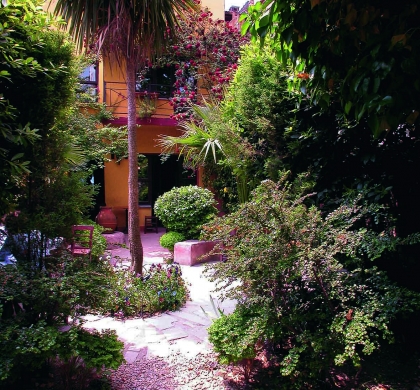
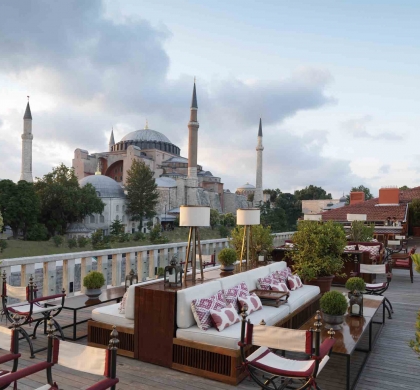
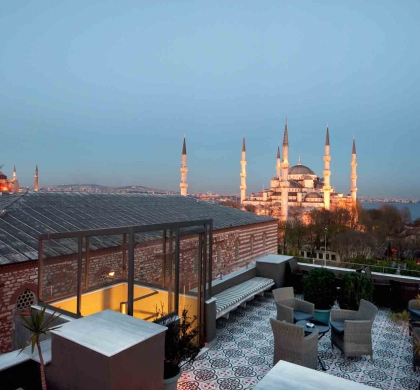
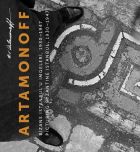
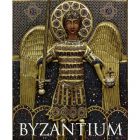
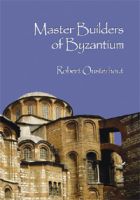


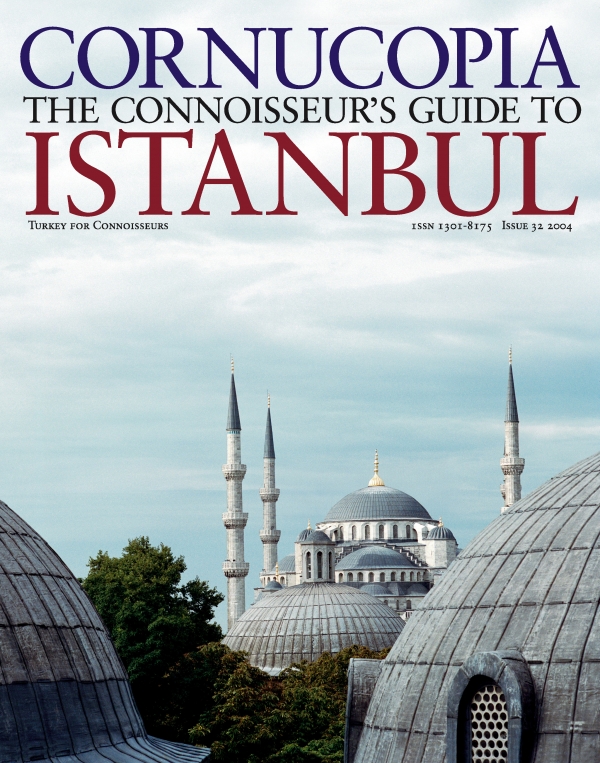
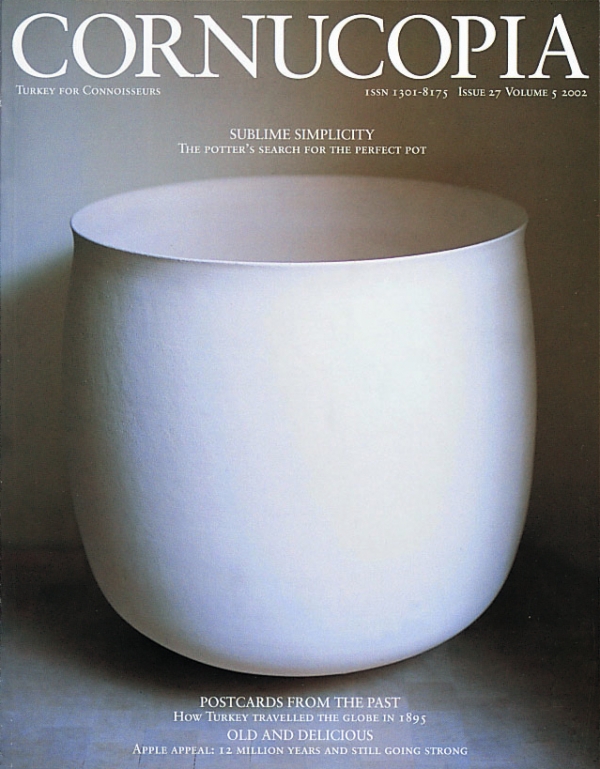
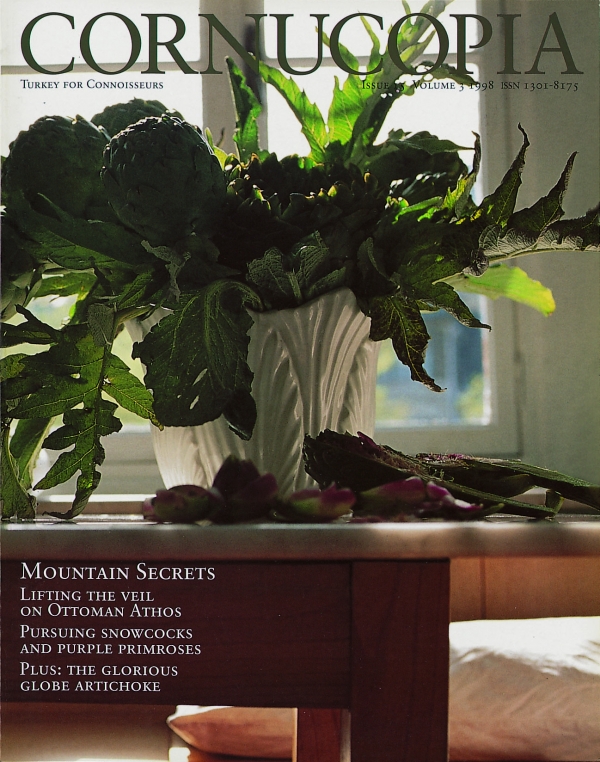

Cornucopia works in partnership with the digital publishing platform Exact Editions to offer individual and institutional subscribers unlimited access to a searchable archive of fascinating back issues and every newly published issue. The digital edition of Cornucopia is available cross-platform on web, iOS and Android and offers a comprehensive search function, allowing the title’s cultural content to be delved into at the touch of a button.
Digital Subscription: £18.99 / $18.99 (1 year)
Subscribe now